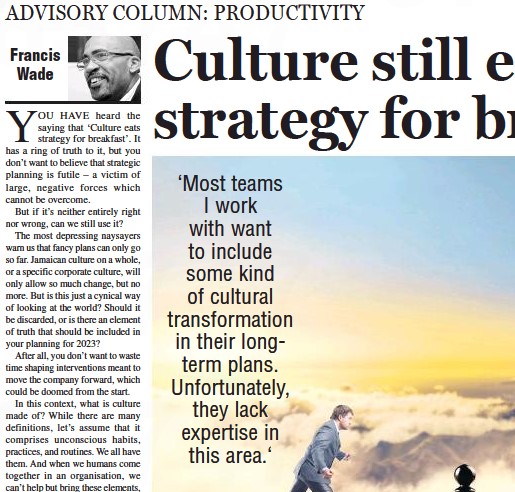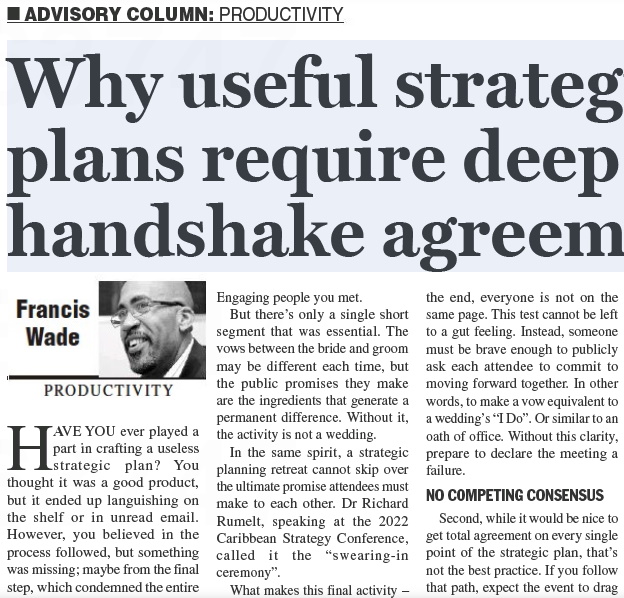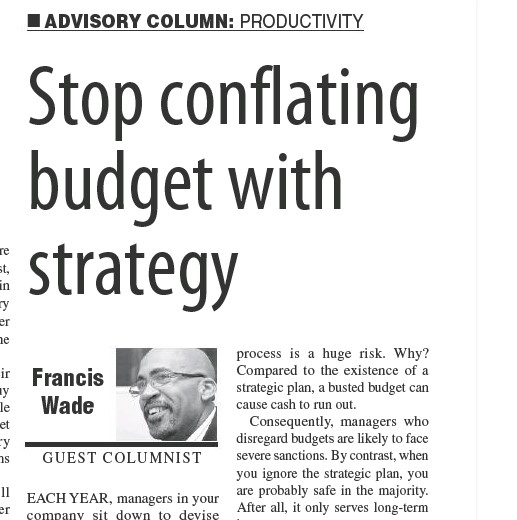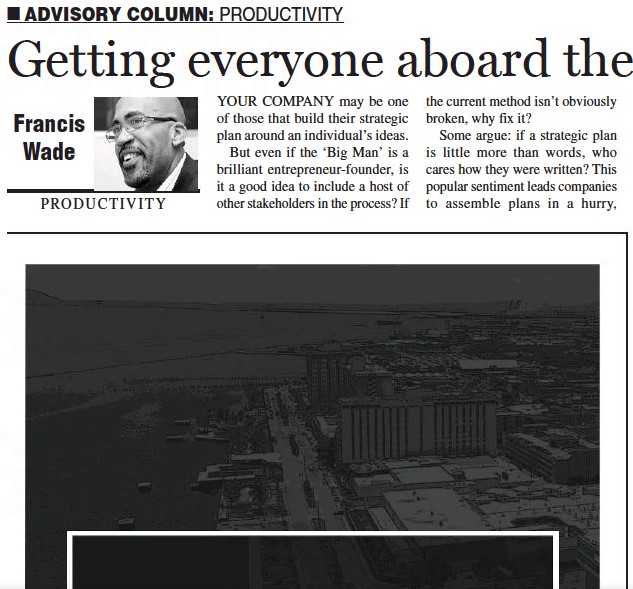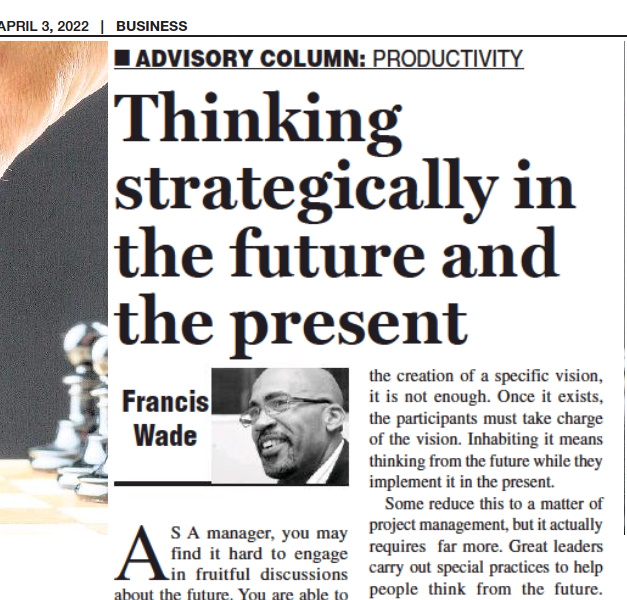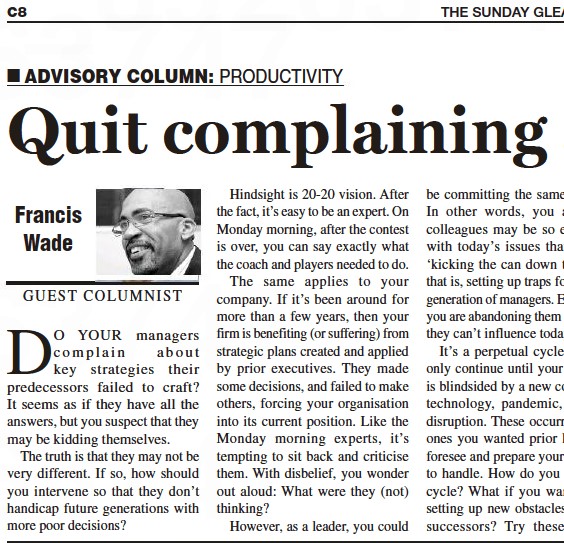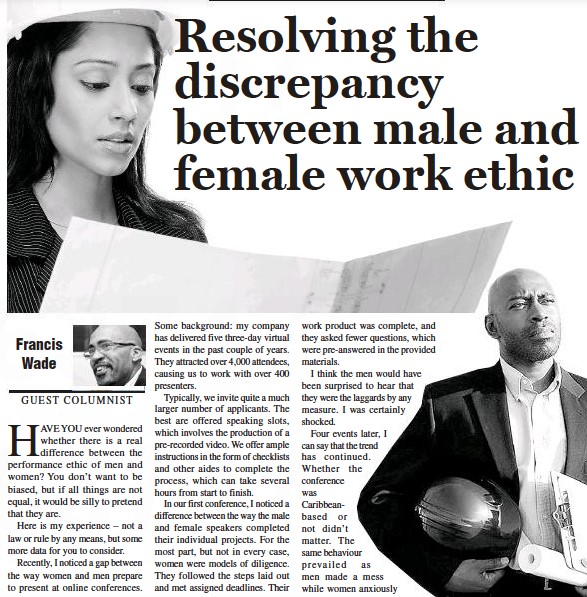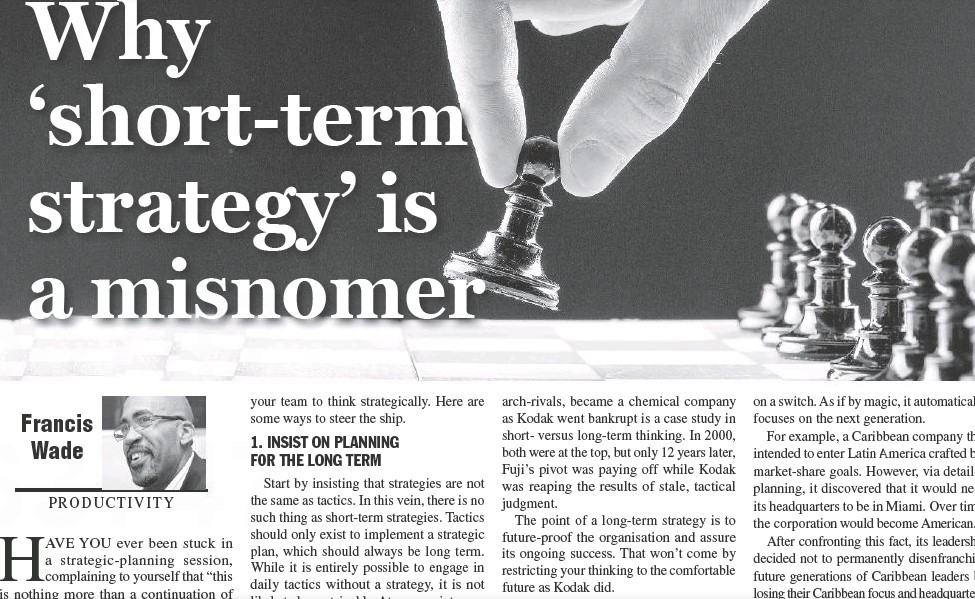You have heard the saying that “Culture Eats Strategy for Breakfast”. It has a ring of truth to it, but you don’t want to believe that strategic planning is futile – a victim of large, negative forces which cannot be overcome. But if it’s neither entirely right nor wrong, can we still use it?
The most depressing naysayers warn us that fancy plans can only go so far. Jamaican culture on a whole, or a specific corporate culture, will only allow so much change, but no more. But is this just a cynical way of looking at the world? Should it be discarded, or is there an element of truth that should be included in your planning for 2023?
After all, you don’t want to waste time shaping interventions meant to move the company forward, which could be doomed from the start.
In this context, what is culture made of? While there are many definitions, let’s assume that it comprises unconscious habits, practices, and routines. We all have them. And when we humans come together in an organisation, we can’t help but bring these elements, combining them into one.
For example, all companies have people who complain about being treated unfairly. Some leave their ruminations in the car park. Others spend most of their workdays kvetching to themselves. But our definition would focus on the complaints which are continually shared in workplace conversations.
By contrast, the occasional complainant, who resolves matters quickly, does not add to the culture. When a single problem is solved, it goes away.
This definition of culture is one your strategic planners should adopt. Why? Most teams I work with want to include some kind of cultural transformation in their long-term plans. Unfortunately, they lack expertise in this area. They only know enough to label organisations they have experienced from the past, judging some as superior, and others toxic.
However, they don’t know how to create a large-scale shift from one level to another. Without this expertise, their objective remains more of a hopeful wish than anything they can operationalise. To make things more concrete, here are some practical steps to take to forge the kind of culture that supports your strategic plan.
- Go Past Current “Values” and “Purpose” Statements
If your company hasn’t revamped its core statements in the last year, chances are they are no longer offering much guidance. In the worst cases, staff only use them to point out hypocrisy gaps…the places where your leaders are not walking their talk.
If you find yourself in this kind of situation, the standard advice is to undertake a refresh. Rather than driving up further cynicism and resignation, retire the statements and declare that they have done their job. Set up an effort to define new ones in light of a fresh strategy. Point out their purpose: to help accomplish a specific long-term vision.
This is Blue Ocean-style, opportunity creation at its finest.
But most leaders may still want the documents to be vague, echoing the tone of the ones they are replacing. Today’s best practice calls for a different approach. Instead of being ephemeral and high-level, look to define specific behaviours so they can’t be mistaken.
- Specific Behaviours Listed in the Corporate Strategic Plan
It may become clear as you do your planning that some of your corporate culture must be changed. For example, a culture of constant victimhood isn’t likely to be innovative and entrepreneurial…the behaviours your new strategy needs to succeed.
But these initial phrases are only clues. They aren’t detailed enough. Instead, take a deeper dive into the specific behaviours you want to change. Here, they need to pass the Video-Tape Test. If they can be enacted on film, then they are clear enough to be included in your strategic plan.
For example, a phrase like “responsibility” may fail the test because it doesn’t speak to a specific behaviour. By contrast, “I apologise to those I have wronged” is a specific behaviour which is undeniable.
It’s also one which can be trained, coached, measured and added into a performance system. As such, it becomes a tool to assist in accomplishing the strategic plan.
While you may group similar behaviours for ease of transmission, it’s important to be careful. Why?
The fact is, this isn’t about a change for its own sake. Instead, the planning team should see a clear cause-and-effect relationship between newly envisioned behaviours and critical elements of the strategy.
As such, these are carefully defined, culture-change projects designed to shift specific behaviours. Although such efforts are challenging, don’t allow them to languish or be eaten up by a toxic culture no-one supports.

